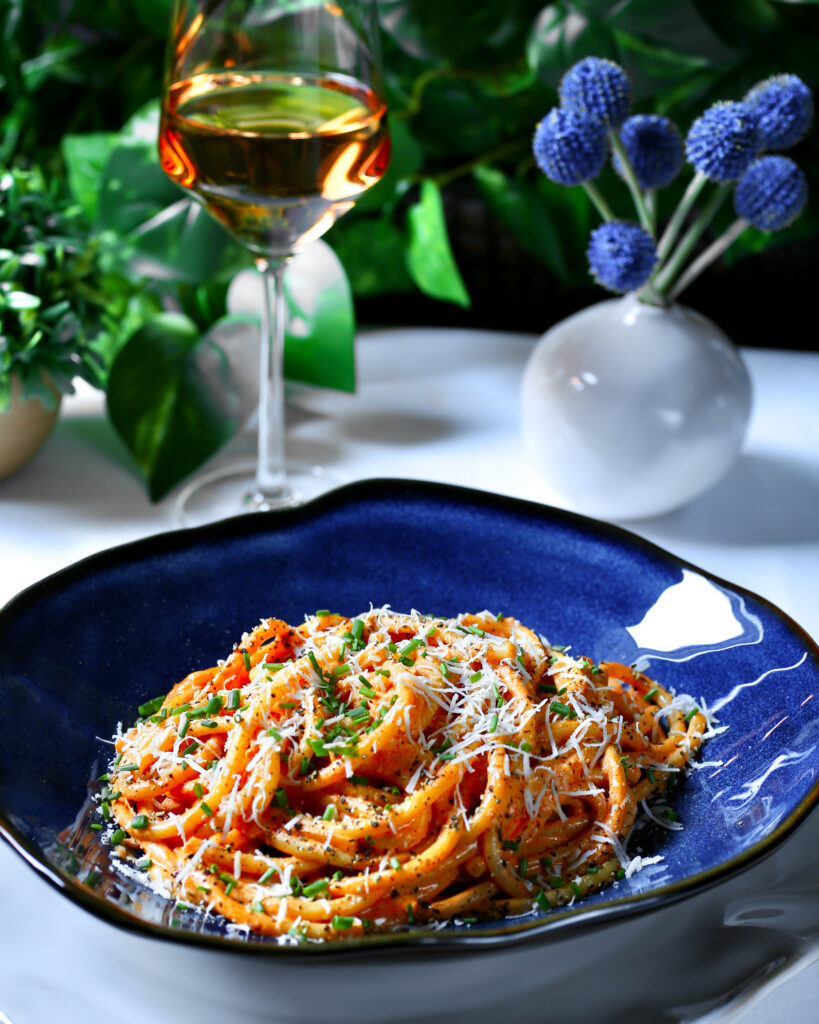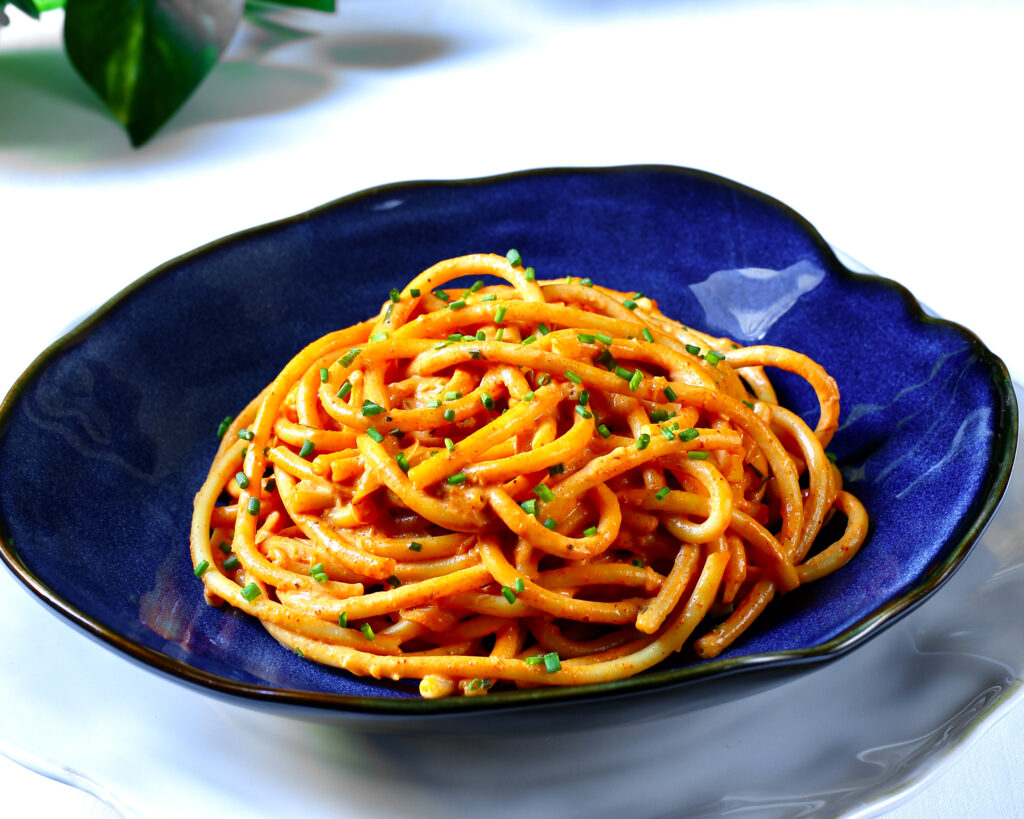
Creamy Gochujang Noodles
In the mid-2000s, Korean street food vendors took cues from the Italian pasta dish penne alla vodka by introducing heavy cream into their traditional tteokbokki.
Tteokbokki is a popular stir-fried rice cake snack that is simmered in a spicy-sweet gochujang sauce. Gochujang is a Korean red chili paste with sweet heat and a fermented umami richness. The addition of cream results in a distinctive rosy color, hence the moniker “rosé tteokbokki.”
My previous Korean-French fusion salmon dish, a Creamy Gochujang Braised Salmon, blended those same spicy and creamy elements. This Korean-Italian fusion noodle dish also wows with a delicious fruitiness, slight smokiness and depth of flavor from the sun-dried Korean red peppers in the paste.
Bucatini stands in as an interesting alternative for rice cakes because of its wonderfully chewy quality. Handmade bronze dies give the pasta a fabulous coarse, sauce-absorbing surface, perfect for soaking up all those spicy-sweet-creamy-umami flavors that rosé tteokbokki is famous for…

